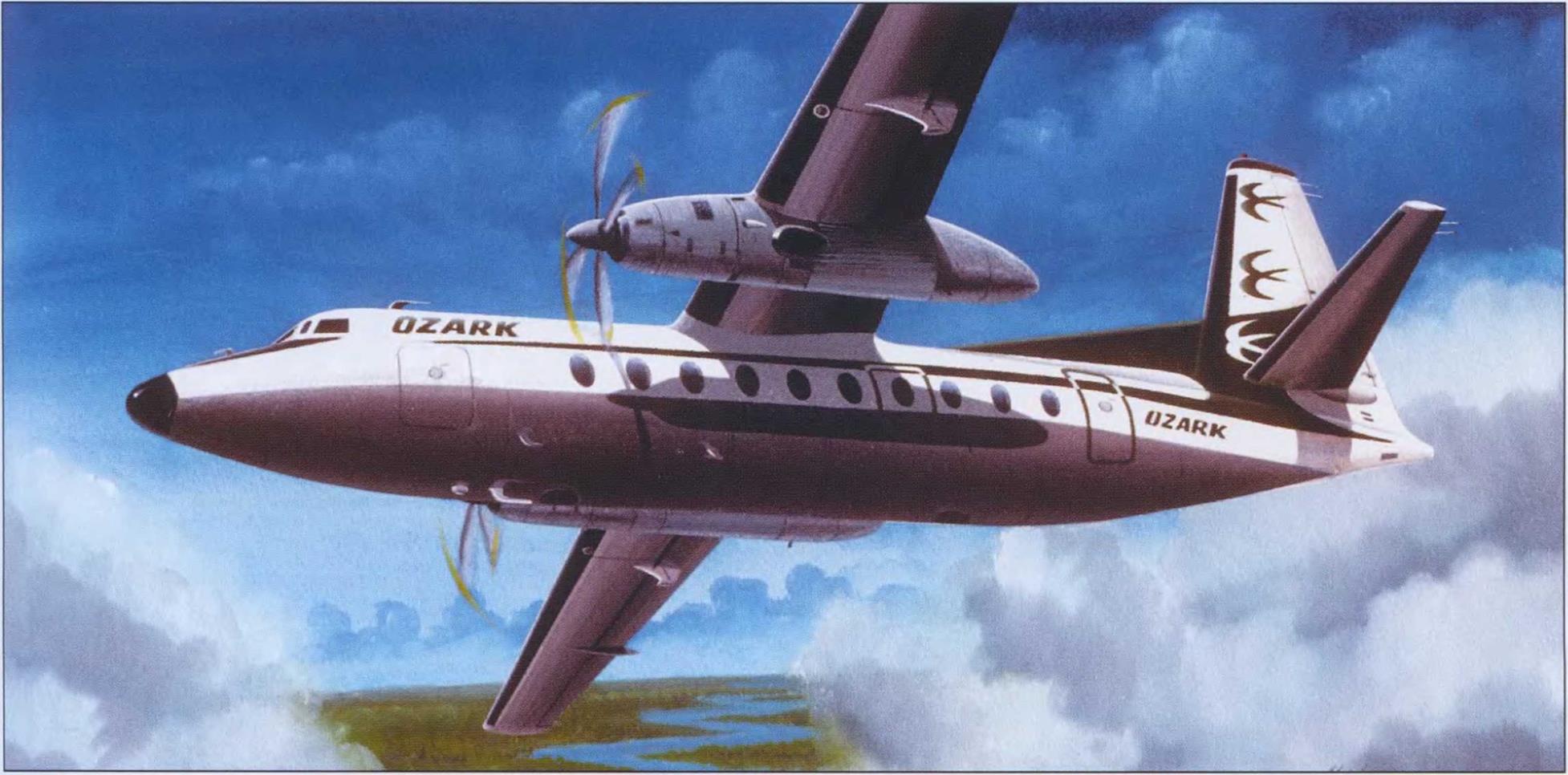Fokker F.27
While trunk carriers grew quickly with higher – capacity airliners, local-service carriers suffered from a lack of rapid traffic growth, which produced a need for more efficient aircraft replacements with a smaller increase in passenger payload. Convair-Liners and Martins provided the required number of additional seats but were more expensive to operate than the DC-3s, with only a marginal increase in speed.
Dutch manufacturer Fokker began developing a DC-3 replacement in 1950, after abandoning the concept with the advent of World War II. The resurrected design called for 32 seats, later increased to 40. The first F.27 Friendship took to the air on November 24, 1955, from Amsterdam’s Schiphol Airport.
Not surprisingly, managers of 11 of the 13 local – service carriers inspected the new design in Holland and were favorably impressed. Four carriers —Bonanza, Frontier, Piedmont, and West Coast—placed orders for the F.27 in 1956, to be manufactured under license in the United States by Fairchild Aircraft Corporation. Although Frontier later canceled its order, Allegheny, Ozark, and Pacific went on to fly the turboprop airliner.
Purchase of new equipment, a first for local-service carriers, was assured by financing from the U. S. government s Aircraft Loan Guarantee Act, signed into law in September 1957.
The rugged, high-wing twin utilized Rolls-Royce Dart 511 (R. Da.6) turboprop engines that had been proven in use on the pioneering Vickers Viscount. Its U. S.-built variant (designated F-27) first lifted off from Hagerstown, Maryland, on April 12,1958. It was certified three months later and began carrying revenue passengers with West Coast Airlines on September 28, nearly two months ahead of the first Fokker variant, which was placed into service by Aer Lingus. With a cruising speed of just over 320 mph, the airplane was nearly twice as fast as the DC-3 it replaced and represented the first turbine – powered U. S-built airliner to enter commercial service. The F-27 also introduced local-service passengers to the comfort of built-in air conditioning.
More-powerful Dart R. Da.7 engines resulted in the F-27A model, followed by the F-27B with a larger cargo door. Later variants, the F-27J and F-27M, offered even greater engine power. Like the DC-3s it replaced, the Friendship was nearly self-sufficient on the ground with steps built into the passenger door on the Fairchild aircraft, and waist-high cargo-door access.
The success of this remarkable turboprop airliner would eventually lead to a stretched version. The F.27 Mk 500 and FH-227 followed in the mid-1960s pushing the types production run to an impressive total of 786, including 205 Fairchild-built airplanes.
|











